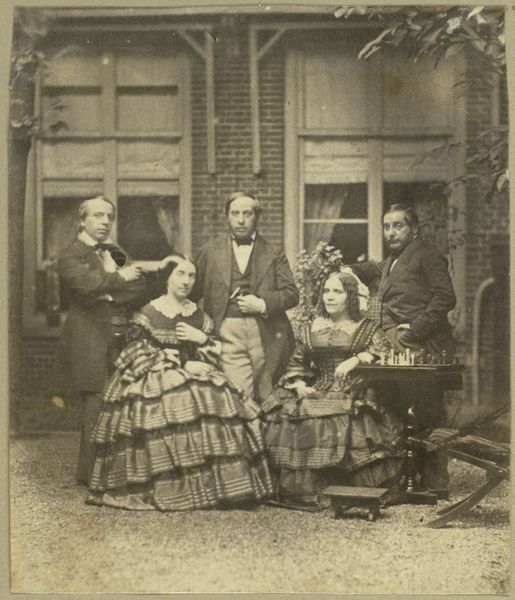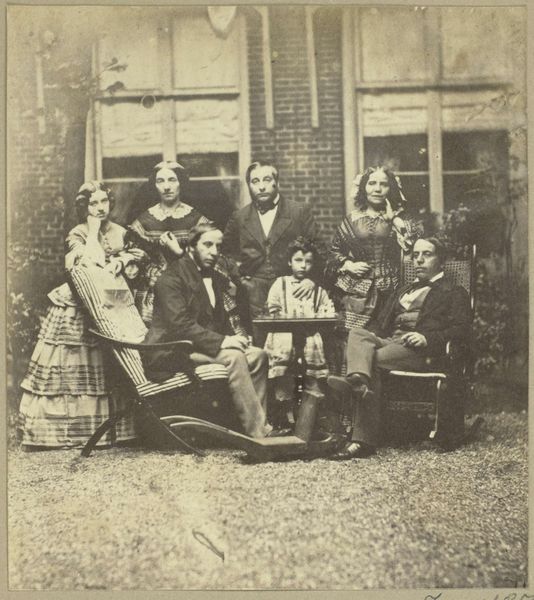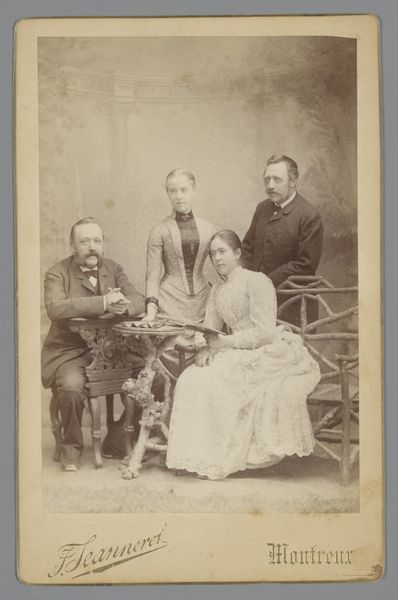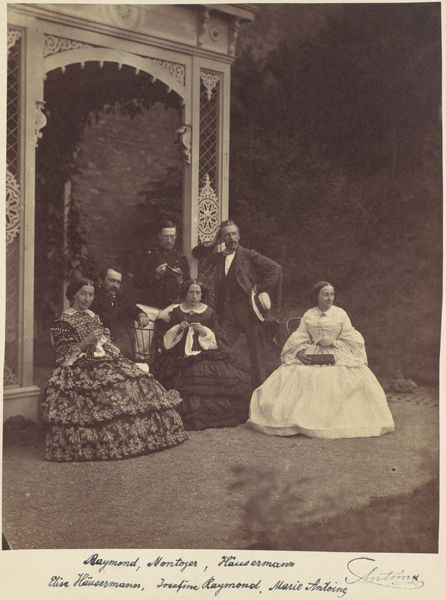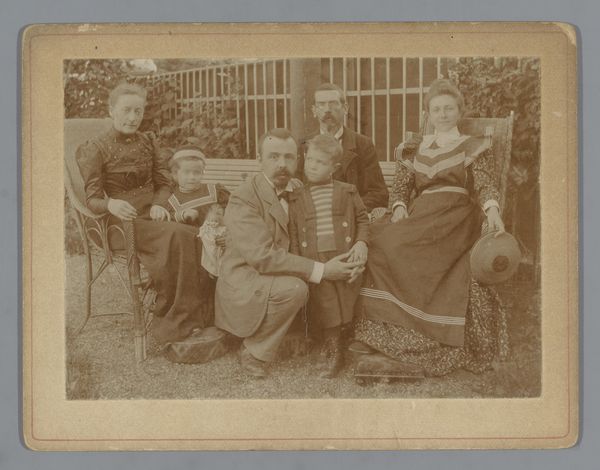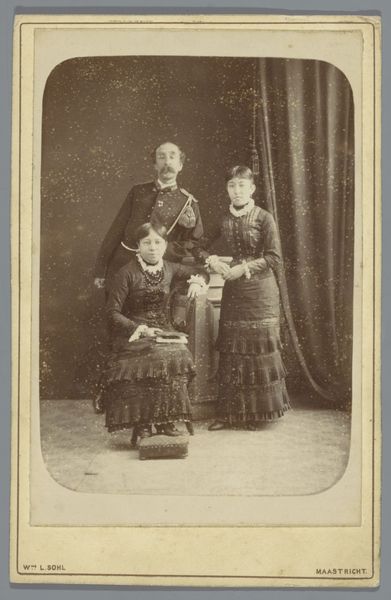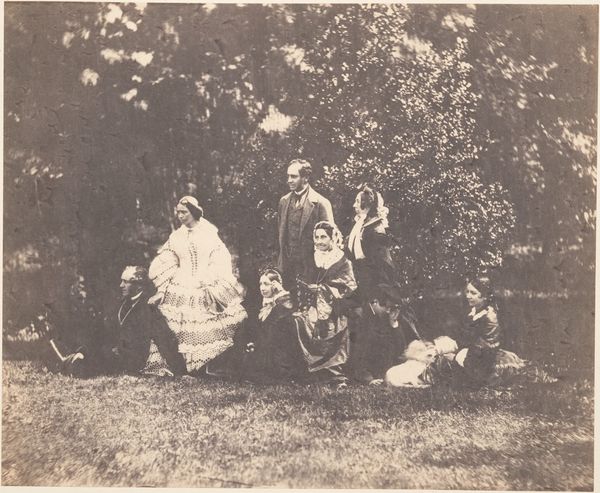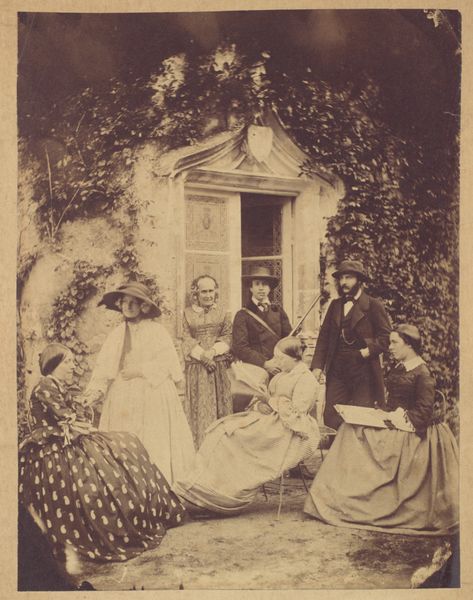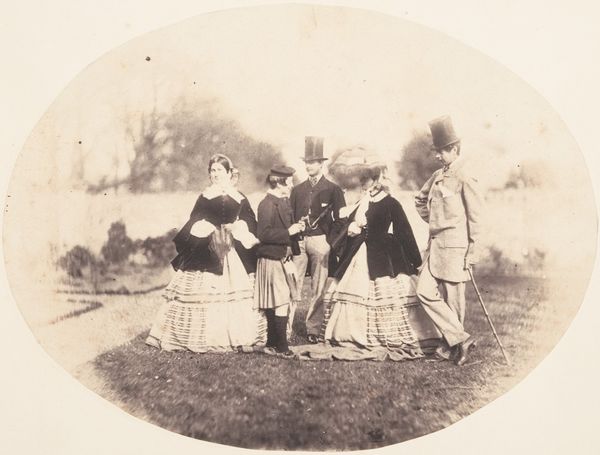
Groepsportret van Euphrosine Asser-Oppenheim met haar broers en haar zuster Elisa Beer-Oppenheim in een tuin 1856
0:00
0:00
daguerreotype, photography
#
portrait
#
daguerreotype
#
photography
#
historical photography
#
group-portraits
#
19th century
Dimensions: height 124 mm, width 95 mm
Copyright: Rijks Museum: Open Domain
Curator: This daguerreotype, dating back to 1856, captures a "Groepsportret van Euphrosine Asser-Oppenheim met haar broers en haar zuster Elisa Beer-Oppenheim in een tuin". It’s attributed to Eduard Isaac Asser and is held here at the Rijksmuseum. Editor: Wow, it's so dreamy! Like looking through time itself. A family, clearly posed, and bathed in this lovely sepia light... it's melancholic, almost ethereal. I love how faded it is; gives it this haunted feel. Curator: Absolutely. This group portrait offers a compelling glimpse into the social dynamics of 19th-century families, particularly the role of women, visible in their fashion and posture. Euphrosine, her sister Elisa, and their relationship to their brothers in a time of shifting societal norms, speak volumes. Editor: Those dresses, though! Mountains of ruffles, bless their hearts! But also, what's the story they aren't telling? All this wealth and respectability, what’s simmering beneath the surface, do you think? Curator: Precisely! Analyzing the sitters' expressions alongside their positioning within the frame, and knowing the cultural context for Jewish families in the Netherlands at this time, allows us to deconstruct themes of identity, assimilation, and belonging. Editor: I see it. The men have that serious gaze of responsibility, and the women, maybe it’s the photography, but I sense a wistful... resignation? This snapshot feels so constructed, almost like a performance for the future. Curator: Indeed, these photographic portraits functioned as statements of status and familial connection, intended for public consumption, while also encapsulating internal dynamics. Understanding Asser’s practice and this daguerreotype technique can inform our understanding about the social representation. Editor: It really makes you wonder about the gap between image and reality. What was their family life actually like? And it gets me thinking about how much has changed with image creation and social personas now... Curator: It certainly challenges us to critically assess the relationship between visual culture and societal power structures, then and now. I'm intrigued by how photography, especially in its infancy, becomes a tool to express aspiration and control narratives. Editor: What a trip. I love how a single image can unearth a million questions! Curator: Exactly! And hopefully sparks meaningful reflections about history, representation, and the complexities of family life in any age.
Comments
No comments
Be the first to comment and join the conversation on the ultimate creative platform.
